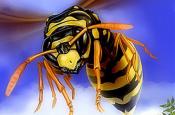Search
Login
Work on the plot: preparing fruit trees for winter
At the very end of summer or in the autumn period, depending on the region and area of \u200b\u200bresidence, gardeners begin the most important part of caring for fruit trees and shrubs - their preparation for the winter period. Wintering for any perennial plants is considered the most difficult and intolerable time of their existence. Unfavorable weather conditions in summer can leave owners without a harvest, but harsh weather in winter can lead to the death of the entire garden - and trees and shrubs.
Content
- Reasons to be careful about preparing your garden for winter video
- Fertilizers for fruit trees
- In winter, the garden needs protection from wind, frost and sun video
- Preparing trees for winter - what you need to do video
- How to cover trees for the winter - mulching soil around trees
- Pruning fruit trees and its varieties
Reasons to be careful about preparing your garden for winter

Based on the foregoing, it can be understood that the main task of tree breeders is to ensure safety in the winter season, that is, to ensure their safety from winter weather. In this cold season, in addition to the threat of complete freezing of plants from lowering temperatures, often the damage is caused by the sun, which leaves a mark in the form of sunburn on the bark; deep cracks in the cortex from severe or prolonged frost are also not uncommon; dying off of shoots from a piercing cold winter wind; broken branches from the weight of the snow cover; and in addition to all this, there is also debate, getting wet and sticking out the root system from the ground. The winter period is difficult not only for plants, but also for animals. Therefore, it is necessary to provide perennial plants with safety also from rodent pests - hares, mice, rats and so on. Any gardener is required to completely secure their garden plantings and save the life of plants.
The magnitude and complexity of plant damage in winter can depend on their age, and on their general condition, and on their care during other periods of the year, and of course on certain characteristics inherent in each variety and type of plant.
For example, a garden crop such as an apple tree is quite widespread in the middle lane. It rightfully takes the highest place among the trees, delighting with its adaptability to the climate of the area, as well as its seasonality. Varieties of apple trees growing in these regions can easily withstand frosts of more than thirty degrees. And the tree received, for any reason, will eliminate the damage itself. With pears, things are a little more complicated. She has a lower percentage of winter hardiness. Fatal damage to it may appear even at a temperature of about minus twenty degrees. At about one percent level of winter hardiness, cherries and plums are next to pears.
There is one more important important point - almost all fruit-bearing trees will be damaged in the winter if they are planted on soil that contains excess moisture that could not be drained. This problem can be avoided if drainage work is done in advance on the plot planned for the garden.
Fertilizers for fruit trees
Throughout the winter period, certain stages of life occur in trees. These processes occur regardless of what the current weather is - a thaw or frost. By the end of the autumn period, a certain amount of nutrients is collected in the trees, which is consumed throughout the winter and gives strength to the beginning of life in early spring. The presence of a sufficient amount of potash and phosphorus fertilizers in the soil positively affects the development of plants and contributes to their winter hardiness. Gardeners must fertilize the soil at the right time and in the right amount. Immunity to low temperatures is directly related to the amount of the main nutrients accumulated by the plant - calcium, phosphorus and potassium.
It is also necessary to remember that trees with a dense crown will be more susceptible to frost than trees with thinning. Young seedlings will be less likely to be injured than adults of the same variety. Weak and susceptible trees suffer from frost much more than healthy trees.
Trees that produced a rich harvest last season may suffer more than trees that were not harvested.
Garden in winter needs protection from wind, frost and sun

The agricultural work carried out at the right time, proper care of the gardener for the garden will help reduce the negative impact of various factors. With a strong, variable or constant wind, at subzero temperature, it is quite possible to expend moisture through the bark of a tree, shoots and branches. Sometimes such losses can reach catastrophic volumes, which will lead to the death of not only the crown but also the entire fruiting plant. Specially planted plantations to protect the garden or any buildings, such as a barn, a house, will significantly change the microclimate of the garden and, importantly, play a role in protecting against wind. The better the garden breeder provides the trees with nutrients and moisture, the better and more careless their wintering will be.
In the middle lane, the most common disease of fruit plants is sunburn and cracks in the bark from frost. At the end of winter, when frosts still stand, but there are sunny, quiet days, the southern part of the trunk heats up quite a lot. As a result, cortical cells begin to come to life. At the moment when the sun turns away or ceases to be so active, the frozen part of the temperature drop gets burned and soon dies. Dead parts of the bark take a dark or brown color.
The next type of disease is cracks in the cortex from frost. This problem appears during the alternation of frosts and thaws. In the tissue cover of the cortex, with such differences, stress arises, which leads to the formation of cracks. The resulting damage is not immediately noticeable and does not cause much harm, although it can serve as a loophole for bacterial and fungal infections. Knowledgeable and experienced gardeners do not leave this problem unattended, but produce a certain treatment for problem areas. Since they understand that after several years these damages will take on a more global scale, then the tree can no longer be saved.
Preparing trees for winter - what you need to do

In order to prevent the influence of various environmental factors on the bark and branches, they are whitewashed with lime. This procedure should be carried out in late autumn, after the end of seasonal rains. The periodic onset of a winter thaw can wash away the whitewash. To save it, use a harness.
To produce it, you can use the following materials: fiberglass, ruberoid, nylon stockings, cut shoots of reed, raspberry, reed, tulle, pine or spruce branches. It makes no sense to use fabric materials when tying - a variety of rags and burlap, because when wet when thawing, they will contribute to the formation of mold and rot. A plastic film will also be meaningless, which will create a greenhouse effect on a winter, sunny day.

Arrangement of strapping with dried grass or straw will attract the attention of the ubiquitous rodent. Therefore, part of the harness located closer to the ground, you need to drown a little in the soil. Thus, the tree will be protected from the penetration of rodents. The height of the harness should be above the snow level, protecting the bark of the trunk and lower branches from hares. Mount such a shelter so that it fits as tightly as possible to the trunk. The best time to make the binding will be the end of October.
How to cover trees for the winter - mulching soil around trees

It is possible to protect the root system and prevent the death of the tree as a whole even at very low winter temperatures. Toward the end of October, the garden owner needs to mulch the land around the trunk with manure, peat, humus, compost, sawdust or foliage, a layer of about ten centimeters.
Pruning fruit trees and its varieties

Of course, every fruit tree grower wants to have a large, beautiful, healthy garden and collect good, tasty fruits. Tree branches should be strong and comfortable in the harvesting process. To achieve all of the above will help the annual spring pruning. First you need to know that pruning is different and depends on their age and condition. Pruning is sanitary. No matter how attentive and diligent the owner of the garden is, in any case broken and dried branches will appear. In any case, they must be separated from the healthy part of the tree.

Support cropping. Pruning this type involves thinning branches. Usually fruit trees grow both in the top and in width. If you do not prune them at the right time, especially those parts of the branches that grow to the top, the fruits that matured at one time will end up in the zone of inaccessibility and disappear. In order to limit the growth of the plant, it will be enough to remove the central part of the branch.
Such pruning will promote better foliage development and help ripen larger fruits throughout the branch system, and not just around the perimeter.
After the crown growth is taken under control, you can begin to thin it. After it, it may seem that nothing more is left. But after a careful inspection, there may be branches closely adjacent to each other, intersecting or already touching - they must either be removed or, if possible, disconnected. Summer pruning of fruit trees is usually aimed at creating a crown, which in sufficient quantities could transmit light to ripening fruits.

Rejuvenating pruning. This species must be used when the tree begins to age, the full growth of the branches stops, the fruits become much smaller in size, and the fruiting halos move closer to the edges of the branches. In such cases, the root system is no longer able to provide the enlarged tree crown with the necessary nutrients and water. This type of pruning will significantly improve and extend the fruiting period. First, you need to reduce the number of growing branches. Then - remove branches that are more than three years old, and leave only young shoots located near the trunk. In other words, after carrying out a similar pruning procedure, the gardener will receive a rational, adapted and comfortable tree that has the ability to bear fruit for a long time and delight with its large and tasty fruits.

Paying enough attention to preparing fruit trees for the winter, you can get a huge gratitude from the garden in the form of a rich harvest next fall.







